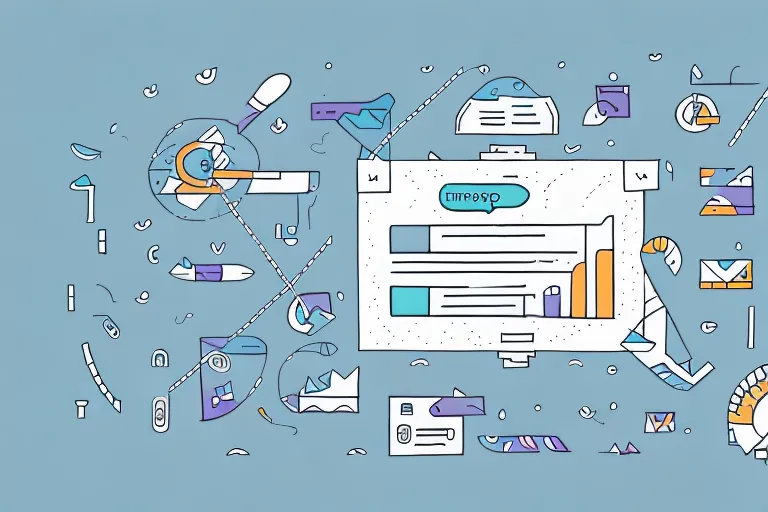In today's digital age, effective marketing campaigns often extend beyond traditional channels. Text campaigns have emerged as a powerful tool for businesses to connect with their target audience and achieve their marketing objectives. Whether you are a small business owner or a marketing professional, understanding how to create an effective text campaign can significantly boost your overall marketing strategy. In this article, we will dive into the basics of text campaigns, explore the importance of incorporating them into your marketing efforts, and provide practical tips for creating a successful campaign.
Understanding the Basics of Text Campaigns
In the world of marketing, there are various strategies and techniques used to promote products, services, or engage with customers. One such strategy is a text campaign, also known as an SMS campaign. This innovative approach involves the strategic use of text messages to deliver targeted messages directly to people's mobile phones.
But what exactly is a text campaign? Well, it's a marketing tactic that utilizes SMS (Short Message Service) technology to reach out to customers. Through carefully crafted messages, businesses can inform their customers about new offers, deliver important updates, or even encourage them to take desired actions.
What is a Text Campaign?
A text campaign, also known as an SMS campaign, involves the strategic use of text messages to promote products, services, or engage with customers. It utilizes SMS (Short Message Service) technology to deliver targeted messages directly to people's mobile phones. Text campaigns can be used to inform customers about new offers, deliver important updates, or encourage them to take desired actions.
Importance of Text Campaigns in Marketing
Text campaigns have quickly become an essential part of marketing strategies for several reasons. Firstly, text messages have significantly higher open rates compared to email or other forms of digital communication. This means that your messages are more likely to be seen and read by your target audience.
Additionally, text campaigns allow for instant delivery and real-time engagement. Unlike other marketing channels, where there might be a delay in message delivery, text campaigns ensure that your message reaches the recipient's phone almost instantly. This immediacy can result in higher response rates and quicker conversions.
Furthermore, mobile phones are virtually omnipresent in today's society. With the majority of people having their phones within arm's reach at all times, text campaigns provide a direct and personal way to connect with your audience. This direct connection creates a sense of urgency and immediacy, making it an effective tool for time-sensitive promotions or time-limited offers.
Imagine this scenario: a customer receives a text message about a limited-time discount on their favorite product. The message is delivered directly to their phone, and they can easily click on a link to make a purchase. The convenience and immediacy of text campaigns make it a powerful tool for driving sales and engaging with customers.
Moreover, text campaigns allow for personalized communication. By segmenting your audience and tailoring your messages accordingly, you can create a more personalized experience for each customer. This level of personalization enhances customer satisfaction and loyalty.
Another advantage of text campaigns is their cost-effectiveness. Compared to traditional advertising methods, such as television or print ads, text campaigns are relatively affordable. This makes it an attractive option for businesses of all sizes, including small and medium-sized enterprises.
Lastly, text campaigns provide valuable data and insights. By analyzing response rates, click-through rates, and other metrics, businesses can gain valuable insights into their customers' preferences and behaviors. This data can then be used to refine future marketing strategies and improve overall campaign performance.
In conclusion, text campaigns have become an integral part of marketing strategies due to their high open rates, instant delivery, direct connection with the audience, personalization, cost-effectiveness, and ability to provide valuable data. By leveraging the power of text messages, businesses can effectively reach their target audience, drive engagement, and ultimately achieve their marketing goals.
Setting Your Text Campaign Goals
Identifying Your Target Audience
Before diving into the specifics of your text campaign, it is crucial to clearly define your target audience. Understanding who your campaign is intended for will help you craft messages that resonate with the right people. Consider demographics such as age, location, interests, and purchasing behavior. By narrowing down your audience, you can maintain a high level of relevancy in your messaging.
In order to identify your target audience effectively, it is important to conduct thorough market research. This research will help you gather valuable insights about your potential customers, such as their preferences, needs, and pain points. By understanding these aspects, you can tailor your text campaign to address their specific interests and concerns.
Additionally, it is beneficial to segment your target audience into different groups based on their characteristics. This segmentation allows you to create personalized messages that resonate with each group. For example, if your target audience consists of both young adults and senior citizens, you can create separate campaigns with language and imagery that appeals to each age group.
Defining Your Campaign Objectives
Once you have identified your target audience, it's time to define your campaign objectives. What do you want to achieve with your text campaign? Are you aiming to increase sales, drive traffic to your website, or generate brand awareness? Setting clear objectives will guide your messaging and help you measure the success of your campaign.
When defining your campaign objectives, it is important to make them specific, measurable, achievable, relevant, and time-bound (SMART). For example, instead of stating a general objective like "increase sales," you can set a specific goal such as "increase sales by 20% within the next three months." This allows you to track your progress and make necessary adjustments along the way.
Moreover, it is beneficial to align your campaign objectives with your overall marketing strategy. Consider how your text campaign fits into the bigger picture of your marketing efforts. By integrating your objectives with other marketing channels, such as social media or email marketing, you can create a cohesive and impactful campaign that reaches your target audience through multiple touchpoints.
Crafting Your Text Message Content
When crafting your text messages, it's essential to capture your audience's attention and compel them to take action. In today's fast-paced world, where everyone is constantly bombarded with information, it's crucial to make your messages stand out.
One way to achieve this is by keeping your messages concise and to the point. With the limited character count of SMS, brevity is key. However, being concise doesn't mean compromising on the impact of your message. Quite the opposite! By carefully choosing impactful language and incorporating a sense of urgency, you can make your messages engaging and memorable.
Consider using powerful words that evoke emotions and create a sense of excitement. Words like "exclusive," "limited time," and "special offer" can instantly pique the interest of your recipients. By highlighting the value of your offer or the benefits customers will receive by taking action, you give them a compelling reason to engage with your message.
Incorporating Calls to Action
A call to action (CTA) is a crucial component of any marketing campaign, including text campaigns. It's the part of your message that prompts recipients to take the desired action, whether it's visiting a website, making a purchase, or redeeming a special offer.
When incorporating CTAs into your text messages, it's important to make them clear, actionable, and easy to understand. You want your recipients to know exactly what you want them to do and how to do it. Avoid vague or ambiguous language that may confuse or frustrate your audience.
One effective approach is to use verbs that inspire action. Words like "shop now," "claim," "reserve," or "get started" can create a sense of urgency and encourage immediate engagement. Additionally, consider using time-sensitive CTAs to create a fear of missing out (FOMO) effect, motivating recipients to take action right away.
Remember, the success of your text message campaign depends on the actions your recipients take. By crafting engaging and persuasive texts and incorporating compelling calls to action, you increase the likelihood of achieving your desired outcomes.
Choosing the Right Text Campaign Tools
Comparing Different Text Campaign Platforms
When it comes to executing your text campaign, there are several platforms available that offer SMS marketing services. Take the time to research and compare different platforms to find one that aligns with your needs and budget. Consider factors such as pricing, features, integration capabilities, and customer support. Choosing the right platform will ensure a smooth and efficient campaign execution.
Utilizing Automation in Your Campaign
Automation has revolutionized marketing, and text campaigns are no exception. Look for platforms that offer automation features such as scheduled messaging, triggered responses, and personalized follow-ups. Automation allows you to optimize your campaign and deliver timely messages without requiring constant manual effort.
Implementing Your Text Campaign
Scheduling Your Text Messages
Timing is crucial when it comes to text campaigns. Consider your target audience's behavior and preferences to determine the best time to send your messages. Test different sending times and analyze response rates to refine your timing strategy. Additionally, avoid excessive messaging, as it can lead to audience fatigue and opt-outs.
Segmenting Your Audience for Personalization
Personalization is key to creating impactful text campaigns. Use the data you have on your audience to segment them into different groups based on their interests, demographics, or past purchasing behavior. By tailoring your messages to each segment, you can increase relevance and engagement.
As you embark on creating your text campaign, remember that experimentation and continuous optimization are essential. Monitor your campaign's performance, track metrics such as open rates, response rates, and conversions, and make data-driven adjustments as needed. By staying proactive and adapting your approach based on feedback, you can maximize the effectiveness of your text campaigns and achieve your marketing goals.

